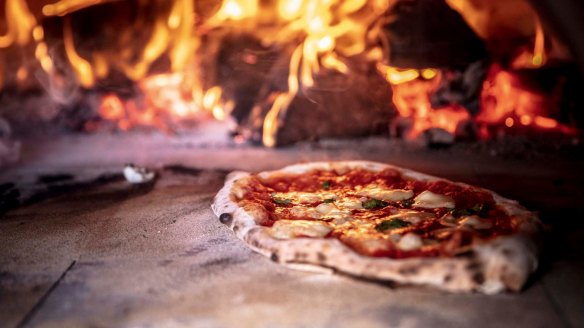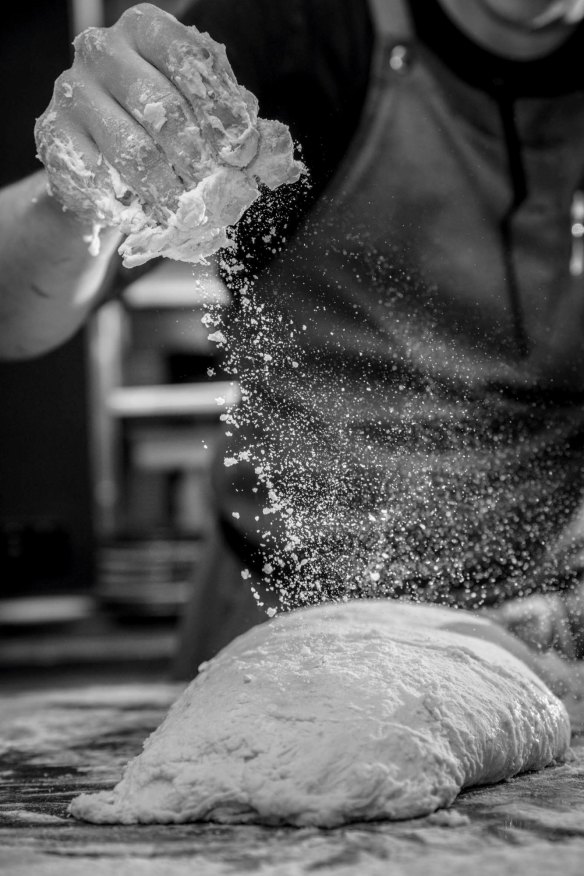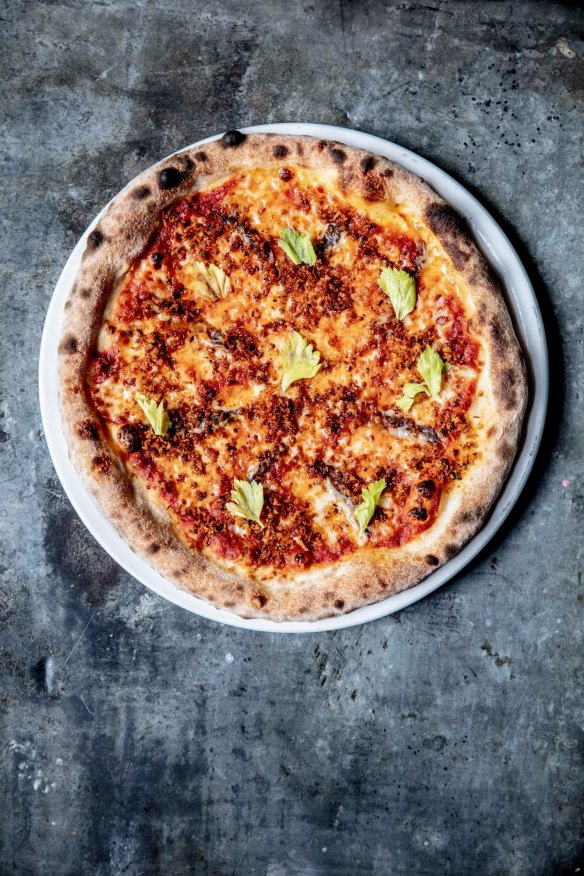10 game-changing tips to help you make better pizza at home

Whichever way you spin it, pizza is the universal good-time meal, the dish we get together over to celebrate the end of a big project, the netball or football season, a family catch-up, a meal with mates.
"My theory is that pizza is universal because it makes you feel comfortable, instilling a sense of guilty happiness," writes third-generation Australian Italian restaurateur Carlo Grossi, in his first cookbook, Ombra, named after his Bourke Street, Melbourne, restaurant.
The son of chef Guy Grossi, Carlo has made a study of pizza, eating it around the world and observing that wherever the pie lands, locals make it their own.
In Chicago, the deep-dish pizza reigns supreme. In New York, it's the hand-tossed thin-crusted pie. And in Australia? We have the lot, from the soft, silky Neapolitan style and crisp, blistered Roman discs through to puffy cooked-in-a-tray slices and even stuffed-crust numbers.
With cooler weather coming, it's the perfect time to host pizza night at your place. What style? Your home, your rules. But there's real science behind making a great pizza.

Here are Carlo Grossi's top tips for elevating your pies, along with recipes from his cookbook that will have you spinning pizza like a pro.
1. Flour power
Many Italians swear by Caputo Classica double-zero flour, imported from Naples. But of the locally grown and milled flours, Grossi rates Laucke Pizza & Focaccia Mix (or any of their high protein count flours). He also uses semolina, a coarse flour made from durum wheat grains, to dust the bench so the dough won't stick.

2. Water source
As pizza dough has so few ingredients, Grossi believes using good-quality water is important.
"We always use the purified water that we serve in the restaurant, which I believe makes a very big difference to the end product in both flavour and density and texture."
At home, use filtered water.
3. Work ahead
Pizza dough needs a rest after mixing. "We experimented with different fermentation times and ultimately found the best time to be 48 hours," writes Grossi. "It gives the best crust with just the right amount of chew and great blistering while also allowing the pizza to stand the weight of toppings."
He puts the dough into a lidded plastic container for 24 hours, then divides it into individual balls, which he proves for another 24 hours in the fridge (see recipe).
4. Full stretch
Before you shape the bases, bring the dough to room temperature, which makes it easier to handle.
Gently flatten the dough ball with your fingertips, then begin stretching with one hand, holding the centre with the other and working around the circumference.
Otherwise, pick the dough up by the centre and let gravity stretch it. Keep the edges thicker to form a crust. Pressing your thumb gently around the dial just in from the rim encourages the crust to puff up.
5. You say tomato...
… Grossi says San Marzano. The Italian tomato variety, available in tins, has the perfect sweet-acid balance for pizza. He likes Zia Rosa tinned toms, and Mutti is another good brand.
You'll find San Marzano tomatoes at Italian delis and grocers such as Mediterranean Wholesalers in Brunswick or King & Godfree in Carlton.
6. Sauce code
The biggest mistake rookie pizza chefs make is to weigh down the pie with too much sauce. Ladle a small amount of pureed tomato into the centre and use the back of the ladle to spread it, leaving a couple of centimetres clear around the rim.
7. Cheese it
Grossi uses good-quality fior di latte (cow's milk mozzarella), which he says is less wet than supermarket mozzarella and melts more evenly.
In the cooler months, rich, nutty fontina cheese adds a touch of decadence to a pizza.
8. Rule of three
Italian pizza slingers operate by the rule of three: no more than three simple toppings added to the base.
The benchmark is, of course, margherita in the colours of the Italian flag: white cheese, red tomato and green basil leaves.
But other Grossi favourites include pancetta, potato and fontina; porchetta (roasted suckling pig) in paper-thin slices with fior di latte and rosemary; and zucchini flower with fontina and cracked black pepper.
Anything he wouldn't put on a pizza? Chicken, lamb or pineapple. But you do you.
9. Feeling hot, hot hot
Put the pizza stone in a cold oven on the shelf that gets the hottest (usually the top shelf) and crank up the temperature to 250C-260C. Once the oven is preheated, so is the stone, ready to crisp the bottom of your pie.

10. Final flourish
A drizzle of extra virgin olive oil over the disc once it slides out of the oven adds the finishing touch.
Grossi likes to serve chilli flakes and dried oregano on the side so everyone can season to taste.
Ombra by Carlo Grossi, published by Penguin Random House, is available now, RRP $39.99
The best recipes from Australia's leading chefs straight to your inbox.
Sign up